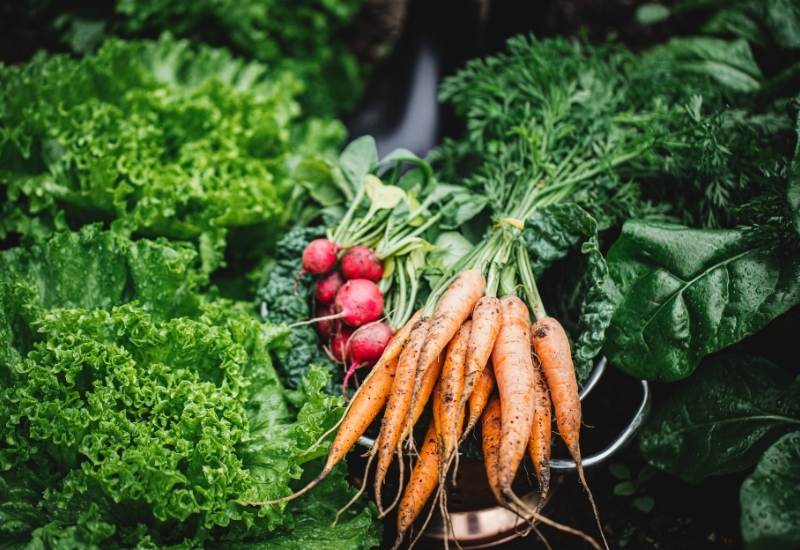
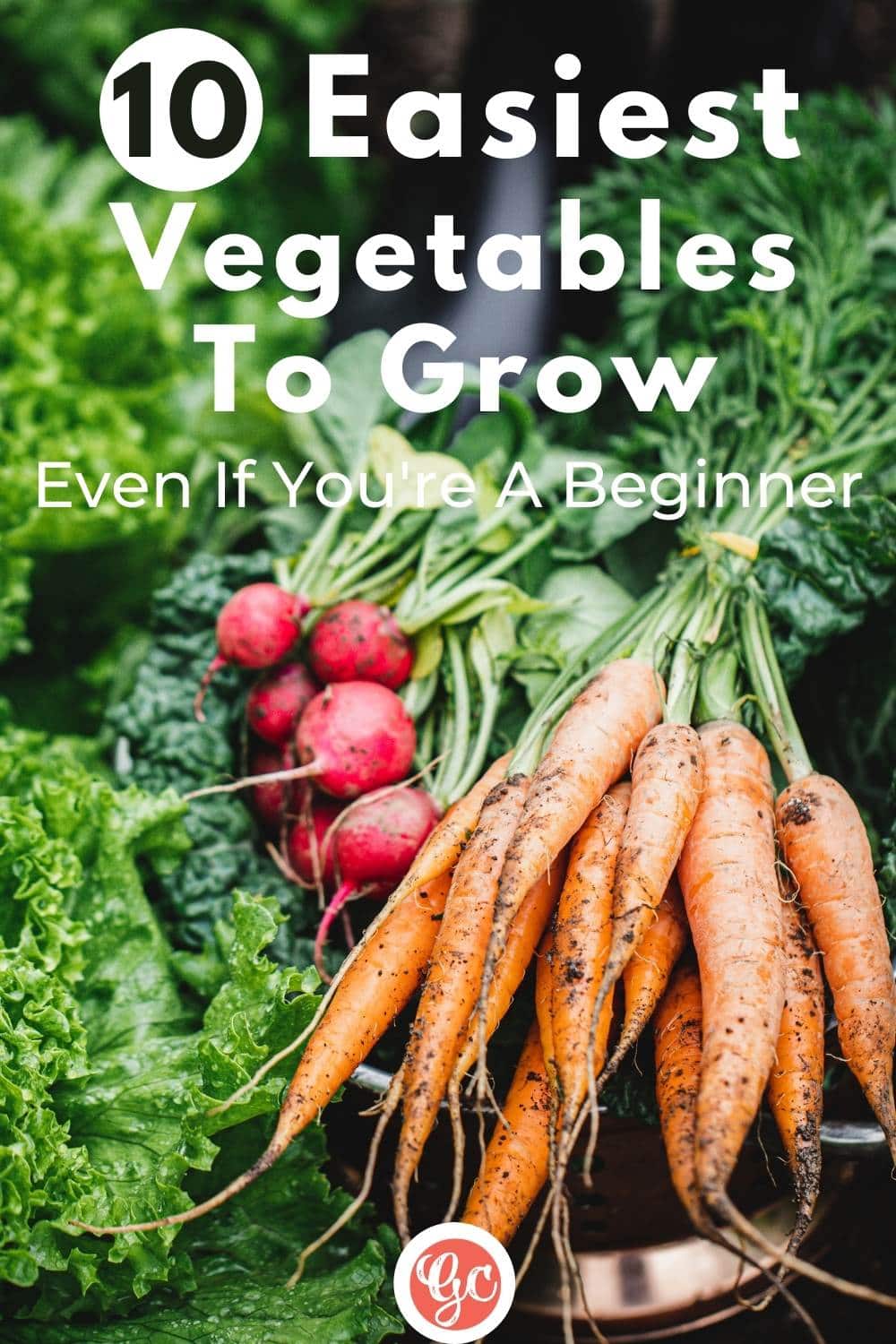
Vegetable gardening at home for the first time is intimidating, but when the gardening bug bites, there’s no turning back. But if you’ve never gardened before you might wondering which vegetables are easiest to grow from seed at home.
Squash, zucchini, tomatoes, bush beans, Swiss chard are easiest to grow from young plants that you buy at a garden center, no matter how much I neglect them. Some vegetables, such as lettuce, carrots, kale, cucumbers are best—and easiest vegetables you can grow from seeds.
My first garden season was tricky. I wanted to grow everything, and a lot of what I grew failed because I didn’t know that each plant has a different set of requirements and needs. I had no idea that some plants are more challenging to grow than others, nor did I understand that some plants need to be in the ground sooner.
Gardening takes trial and error, plus a lot of work.
Don’t be intimidated! Starting a garden is simple if you grow the right crops. To make it simple for you, After over seven years of having a successful vegetable garden, I’ve picked out some of the easiest flowers you can grow from seed – so you can enjoy your home grown in no time.
The vegetables listed below typically provide an ample harvest without a ton of work. Setting your first garden up for success leads to better growing seasons in the future.
So, let’s dig into these tips and tricks to grow the best vegetable garden for first time.
10 Easiest Vegetables to Grow For Beginners
Some vegetables are hard to grow because they require more maintenance throughout the growing season.
Other vegetables are more likely to face diseases and pests. As a new gardeners need to grow vegetables with the highest success rate to give yourself the best chance of a bountiful harvest.
Here are top 10 easy-to-grow vegetables that are among the best to grow from seed.
1. Peas
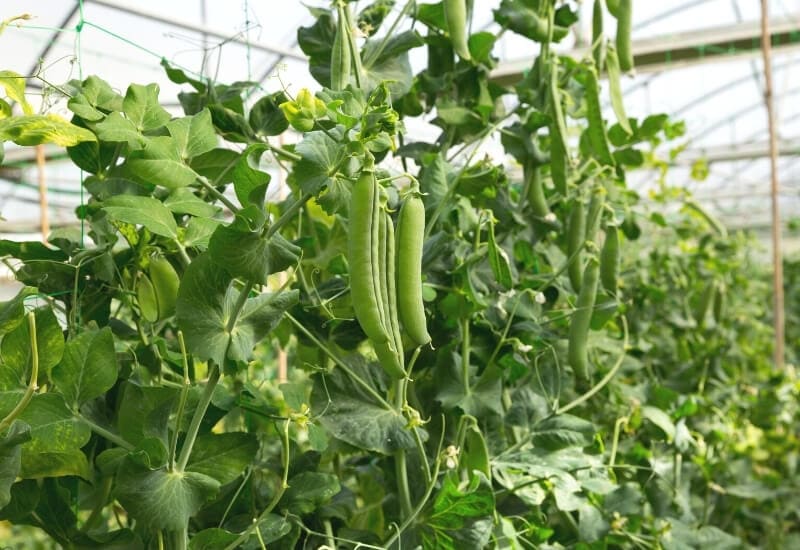
My children love homegrown, fresh peas, and peas are one of the easiest vegetables to grow in garden. Fresh peas taste sweet and delicious compared to the canned variety.
Peas are a cool-season crop, so gardeners can plant them several weeks before the final frost date in your area.
I typically plant my peas three to four weeks before the expected last frost in our area. Peas handle a light frost well, and a frost blanket protects them if a hard frost happens suddenly.
Sowing peas with different maturity dates will spread your harvest out throughout several weeks. Then, sow more peas two weeks later. Continue this pattern until the middle of June, making sure you always have a harvest of peas available.
There are different types of peas that you can grow in your first vegetable garden.
Snow Peas
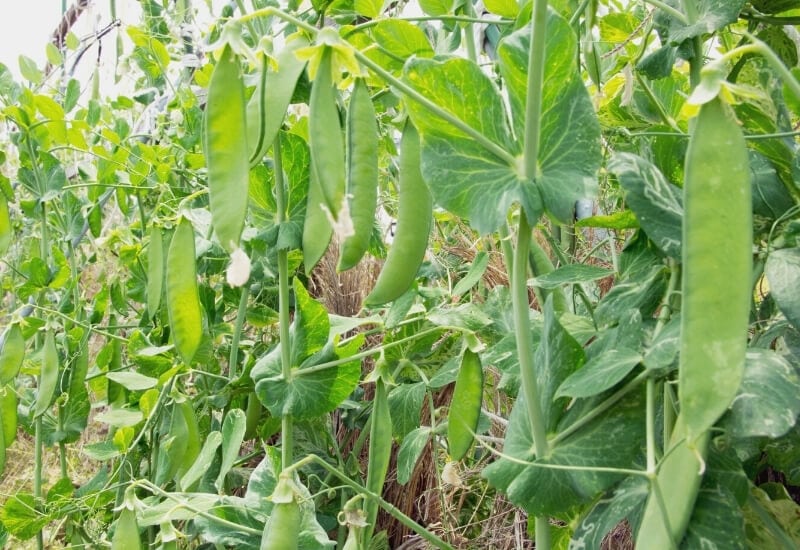
You might recognize snow peas as the pea pods in your Chinese stir-fry. These are flat, edible pods with tiny seeds inside the pods that have yet to plump up.
Despite harvesting before the seeds plump up, snow peas take longer to mature than the other types of peas.
Sugar Snap Peas
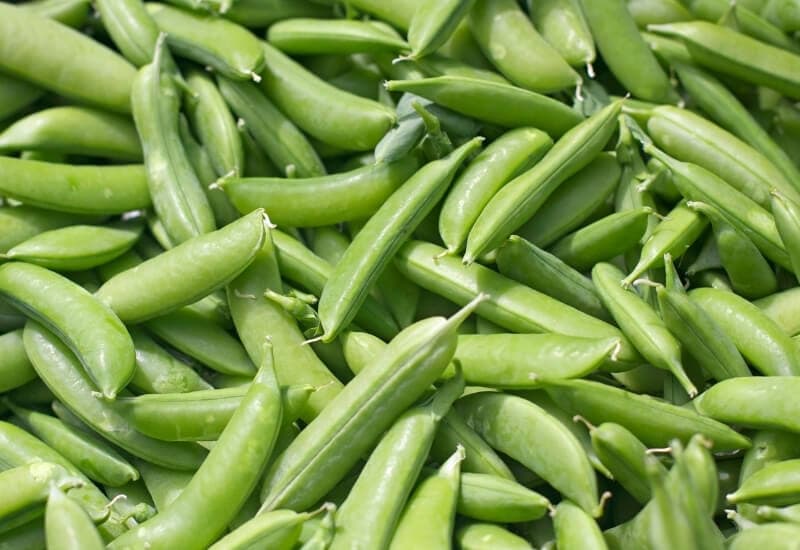
Sugar snap peas are a cross between garden peas and snow peas. The seeds plump up and get large inside the pod, but the pods are crisp and edible, unlike garden peas. You don’t have to shell them unless you want to do so.
Garden Peas
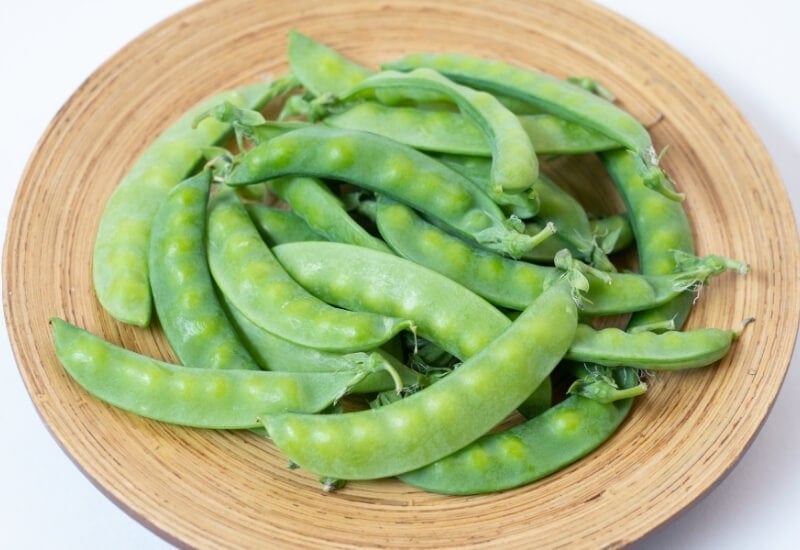
Sometimes referred to as English peas, garden peas don’t have edible pods. Wait until the peas inside the pods are large and plump before harvesting, shelling, and eating them.
Garden peas are the fastest maturing type of peas. Some of the bush varieties harvest in as little as 50 days.
Most pea varieties are vining plants, so they need a support structure to grow upward. They grow well over some arches or trellis. If you want to grow peas in containers, small cages or stakes can support your pea plants, or select a bush variety designed for compact growth in pots.
Here Are A Few Tips For Growing Peas In Your Garden
2. Green Beans
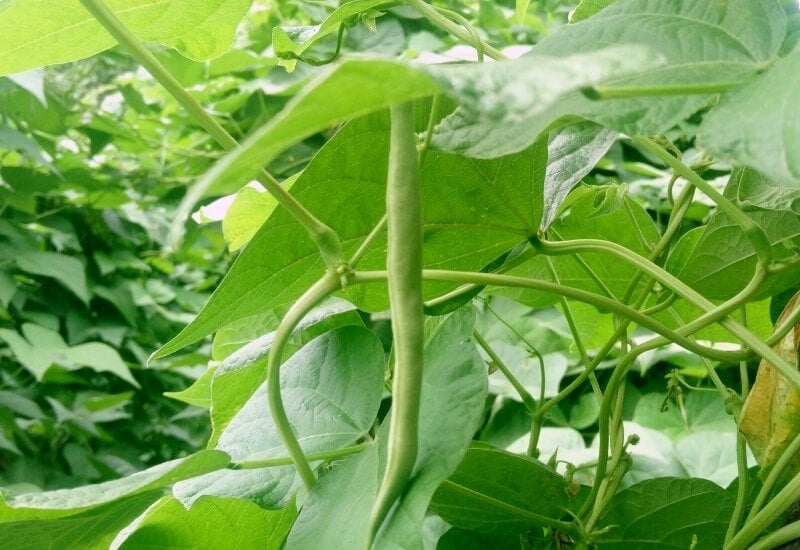
My favorite vegetable to grow is green beans. These simple plants create abundant harvests with little work on your part, and bush beans produce crops so fast that I plant them two times each season.
You should directly sow green bean seeds into your garden; don’t start them inside. It’s best to soak your seeds for 12-24 hours before planting to help them germinate faster once planted in your garden.
There are two main types of green beans to grow:
Bush Beans
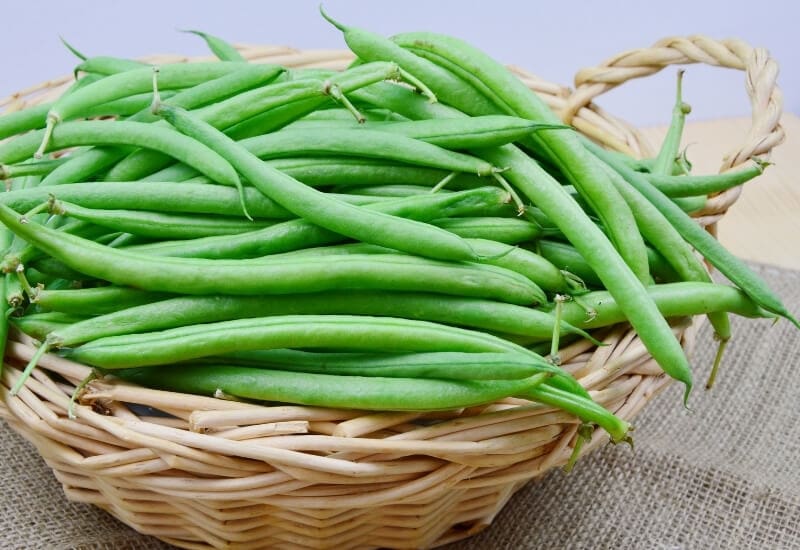
As the name suggests, bush beans grow a bush-shaped plant. They’re small, typically no larger than two feet tall and one foot wide.
Bush beans take between 55-70 days to come to harvest, and the harvest arrives all at one time. You’ll harvest heavily for several days, and then the crop is done.
Depending on the length of your growing season, this is time to plant a second round of green beans.
There are several advantages to growing bush beans. Some of the most recognizable cultivars are bush beans, and they come to harvest faster than pole beans. Plus, they’re easy to grow for beginners.
Pole Beans
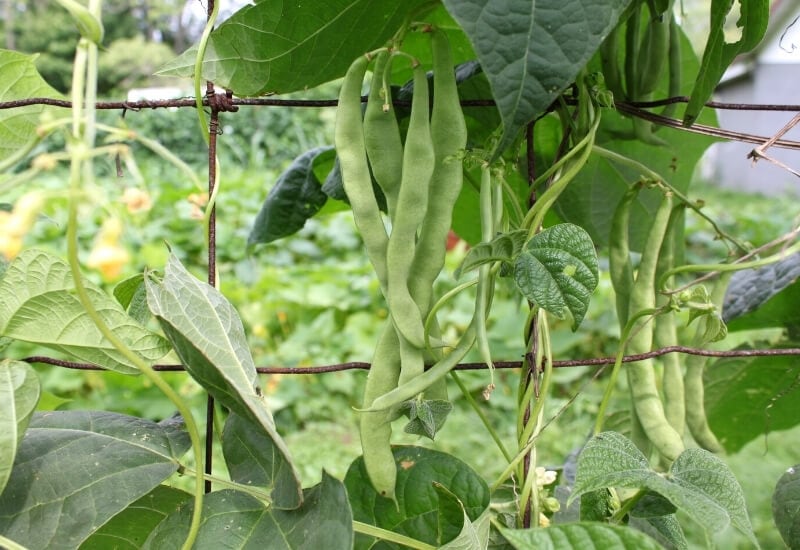
Pole beans are different because they’re vertical growers. You must have a support system, such as an arch or a trellis, to grow your pole beans. That’s helpful because it takes up less space in your garden, giving you room to grow other plants.
Harvesting pole beans is different as well. Instead of the harvest maturing all at one time, pole beans spread their yield out for weeks or months at a time.
Some prefer this because there is no mad rush to use up and preserve the green beans, but each harvest is smaller.
No matter what type you decide to grow, these are warm-season crops, so never plant until the danger of frost passes.
Depending on where you live, that’s anywhere from April to June. Frost will kill bean seedlings, so be sure to take a good look at the projected forecast before planting.
Here Are Some Tips For Growing Green Beans In Your Garden
3. Lettuce
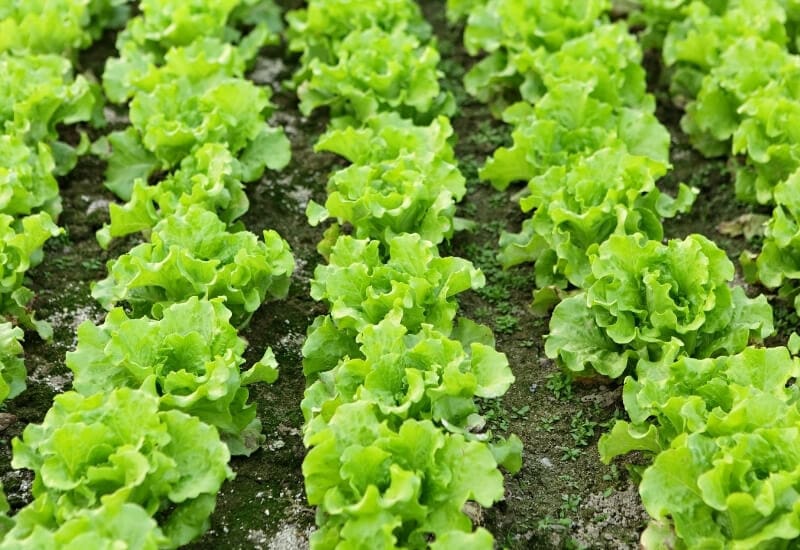
Surprisingly, there are many lettuce types that you can grow in your gardens, such as leaf lettuce or head lettuce.
Most people only think of Iceberg or Romaine, but I love growing leaf lettuce, such as butterhead. It tastes great in salads, and harvesting starts early.
Lettuce is a cool-weather crop, so it’s best planted in the early spring or fall. Growing lettuce in the summer is possible if you select varieties that handle warm temperatures better.
The easiest way to lettuce is to sow lettuce seeds directly in the ground. Lettuce seedlings handle a bit of frost, so plan to plant them three or four weeks before your final frost. Having a row cover will protect the seedlings if the temperatures drop too low unexpectedly.
Growing lettuce is so easy for various reasons.
If You Want To Grow Lettuce In Your Garden, Here Are A Few Tips
4. Kale
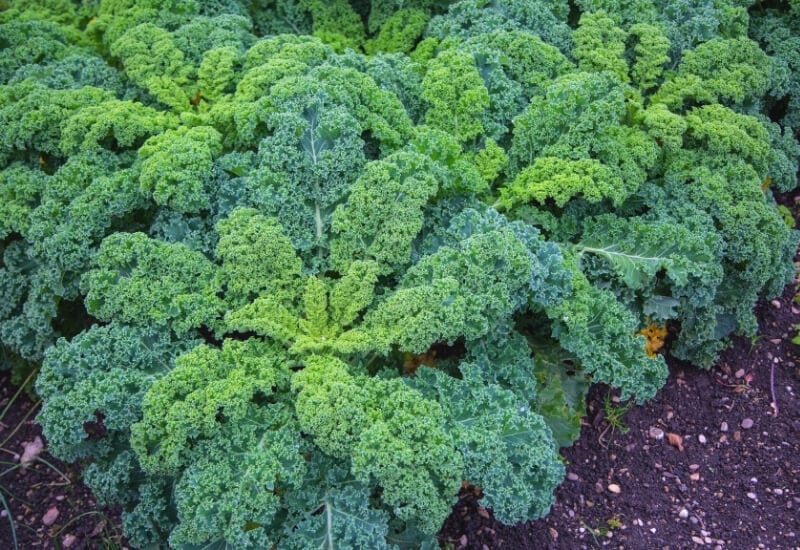
Kale received a massive boost of appreciation in recent years when people realized that this green is full of dense nutrients. For gardeners, kale is easy to grow and hardy, so if you happen to love eating kale, don’t shy away from growing it.
One of the great reasons to grow kale is that you can harvest it at different stages; the flowers and buds are edible.
You don’t have to wait until the plants reach full maturity to harvest them; eat the leaves whenever you want.
Kale is a cool-weather crop that most gardeners grow in the early spring. Set out the seedlings three to four weeks before the final frost.
You also can grow kale throughout the early summer and the fall. Some varieties are more heat-friendly than others.
For growing kale in the fall, plant the seedlings six to eight weeks before the first fall frost. Make sure to harvest the leaves in the fall before the ground freezes.
Here Are Some Tips For Growing Kale
5. Zucchini
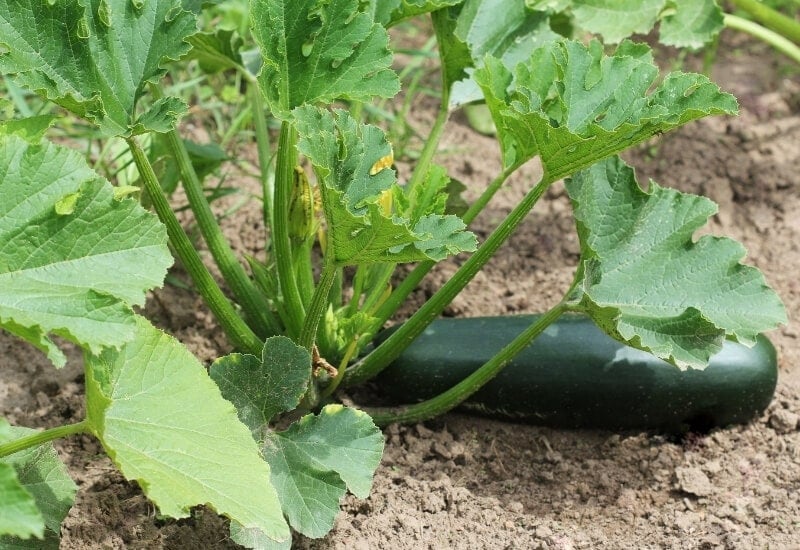
Zucchinis, a type of summer squash, are one of the easy to grow vegetables. They’re so easy and prolific that many gardeners beg their friends and family to take them off of their hands.
All summer squash types are warm-season crops, so you should plant them in the garden after the danger of frost passes. All it takes is one frost to kill your plants.
Gardeners can start the seeds indoors or plant the seeds directly into the garden beds. Most garden nurseries sell a large variety of summer squashes for an even quicker harvest.
Here Are Some Tips For Growing Zucchini In Your Garden
The biggest mistake that many gardeners make when growing zucchini is not providing enough room for the plants to grow.
These are large plants, and they need space. If you fail to give that space, it leads to fruiting problems and fungal infections that might kill your plant.
6. Cucumbers
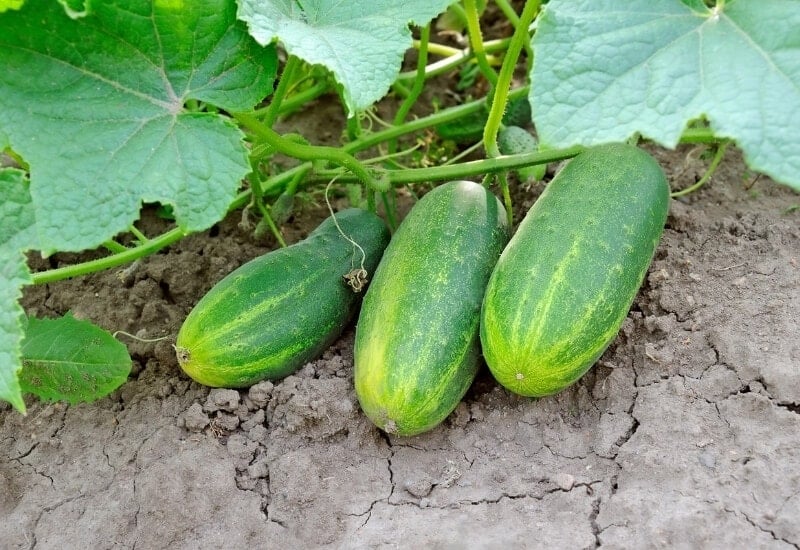
Cucumbers are one of the first plants that I grew that did well. They’re a simple plant to grow, and if you love fresh cucumbers in your salad or homemade pickles, cucumbers are without a doubt one of the easiest vegetables to grow.
Cucumbers grow well in the ground or planted in containers. Gardeners can plant the seeds directly into the ground when the danger of frost passes or start seeds indoors three weeks before the desired planting date.
It is important to remember that cucumbers are a warm-season crop, so you must plant them after the final frost in your region. If exposed to frost, the plants will die.
Here Are Some Tips For Growing Cucumbers In Your Garden
Cucumbers are relatively easy to grow. They germinate fast, typically within 4-10 days, so long as the soil is moist and they have full sunlight. Depending on the variety that you’re growing, expect a harvest between 50-65 days.
7. Radishes
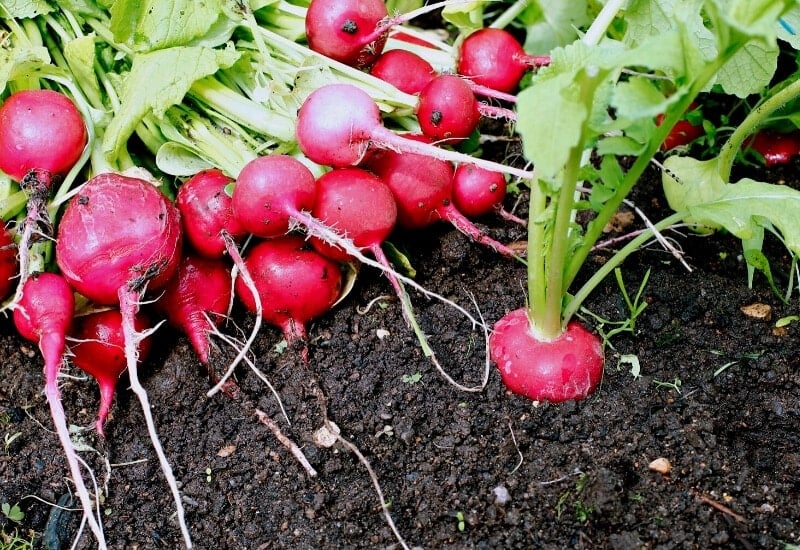
Too many people discount radishes because they’re a less common vegetable to grow, but they’re delicious and easy to grow, even for children. In general, all root vegetables are easy to grow, but radishes take the top spot.
Radishes are cool-season crops that can be planted three to four weeks before the last frost date, so long as the soil is workable and not frozen.
One of the reasons why radishes are great for new gardeners is that they are harvestable within a few weeks.
Some cultivars reach maturity in as few as 24 days. That helps build confidence in new gardeners, and it keeps the attention of children who garden.
Here Are Some Tips For Growing The Best Radishes In Your Garden
8. Carrots

Yes, carrots belong on the list of easiest vegetables to grow as well. Some gardeners incorrectly believe that carrots are complicated, but let me tell you the KEY to growing carrots – soil.
Having the right soil is an essential factor in growing long, healthy carrots. Carrots need 6-12 inches of fluffy, non-compacted soil.
They won’t grow well in clay or clumpy dirt because they can’t push into the compacted soil. Keep it light and fluffy, and you’ll have beautiful carrots.
For new gardeners, I recommend growing carrots in containers first. Containers are less likely to have compacted soil, so it makes it easier to grow carrots. Once you’re accustomed to growing carrots in containers, try growing them in a raised garden bed.
Carrots are cool-season crops, so they are best planted in spring and fall. You can plant carrots three to four weeks before the final frost date.
They also work in fall gardens. Plant them seven to eight weeks before the first frost in your area, but don’t stress if they meet a frost. Carrots are frost hardy crops.
Here Are A Few Tips For Growing Carrots In Your Garden
9. Garlic

Too many gardeners wait for years to try growing garlic, but it’s one of the easiest vegetables to grow. All you need is time to prepare and plan, and you’ll have a large garlic harvest without much time or effort.
Make sure you pick varieties that grow best in your area. Those living in the north should plant garlic 6-8 weeks before your average first frost date in the fall. For those in the south, plant your garlic in February and March.
Believe it or not, garlic bulbs grow from the individual cloves grown inside of the bulbs. All you have to do is separate the cloves and plant the cloves in the soil. Each clove should be four inches deep and six inches apart.
Keep your garlic well-watered until established. Since winter often has plenty of precipitation, only water if your plants face a dry spell.
Here Are Some Tips For Growing Garlic In Your Garden
10. Tomatoes

Tomatoes are the quintessential summer vegetable that everyone wants to grow. Homegrown tomatoes taste so much better than anything you might buy in the stores.
For new gardeners, tomatoes might be a bit tricky to grow because they have particular watering needs, and pests love them as much as humans. That doesn’t mean you shouldn’t try growing tomatoes in your first garden – you should!
Tomatoes are warm-season crops that should be planted in the garden after the final frost date in your area. Tomato seeds need to be started indoors 6-8 weeks before that date to ensure they’re the proper size and hardened off to handle outside conditions.
Here Are Some Tips For Growing Tomatoes In Your Garden
Pick the Easiest Veggies to Grow
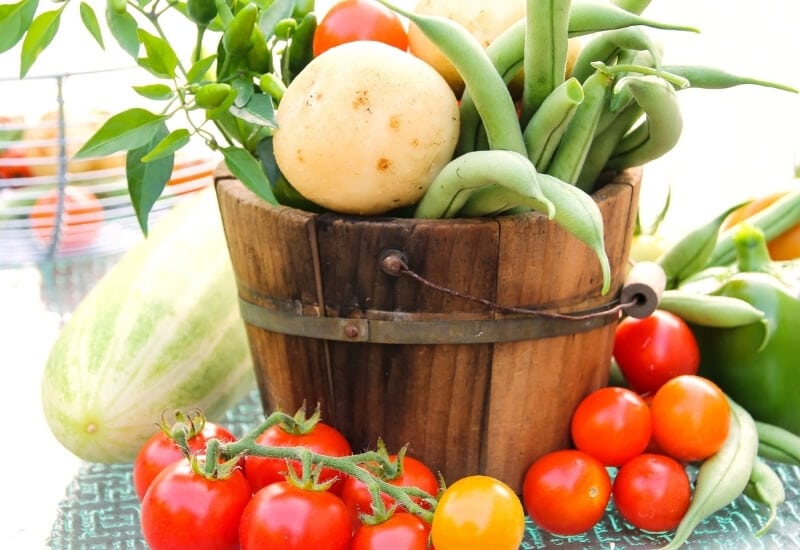
One of the first steps when you plan your first vegetable garden is to pick the easiest vegetables to grow. These nine vegetables require the least amount of work and the highest yields.
They are less prone to pest problems and diseases. Make sure to include some or all of these veggies in your garden this year.

Written By
Bethany Hayes
Bethany is a suburban homesteader, growing over half of the vegetables, fruit, and herbs that her family of six needs each year. She raises chickens and homeschools her children. When she isn’t spending time tending to her garden, you can find her reading, crocheting, and canning.

potatoes should be added. they r super easy to grow. place in dirt, mulch and water. tomatoes should be removed. have lost several tomato plants over the years. most economically would be lettuce, greens, and herbs